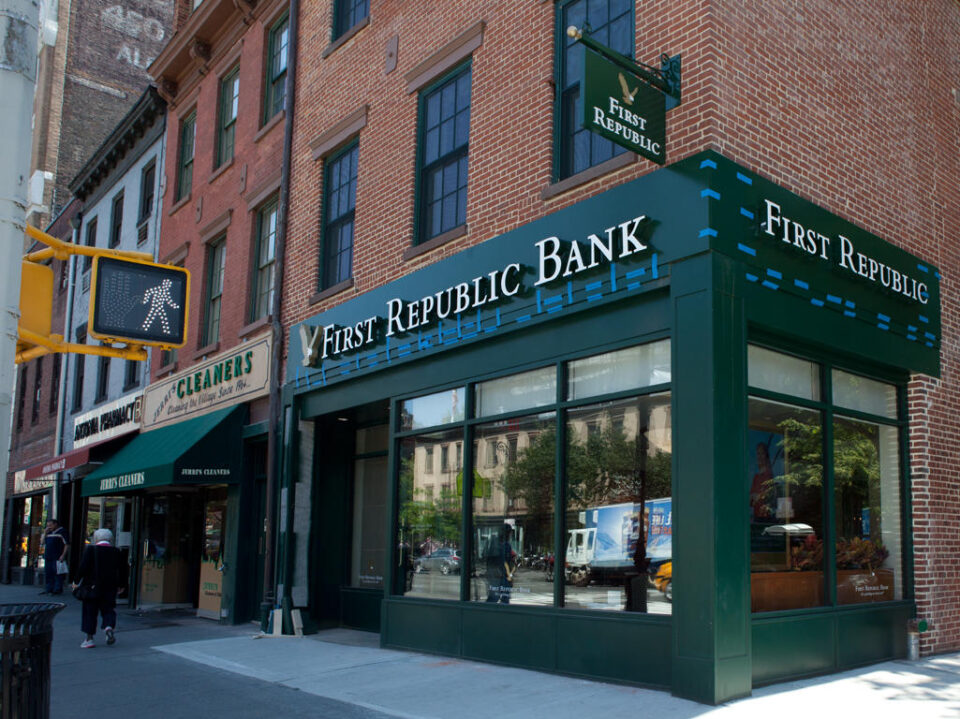JPMorgan Chase’s takeover of First Republic likely ends the panic stage of the banking crisis, with the fallout delegated come in a critical week for markets and the economy.
Following a not successful effort to keep First Republic open, the biggest U.S. bank by deposits reached a deal to take control of the 14th-largest banks. In doing so, JPMorgan helped prevent a destabilizing broad collapse in the sector, but by no methods solved all the banking issues most likely to come.
“This is not the end,” said Gary Cohn, previous chief operating officer at Goldman Sachs, in an interview Monday on CNBC’s “Squawk Box.” “I do not believe we’re going to get three and done. Crises do not sort of end this easily. There will be other concerns out there in the banking world.”
With financial services covering such a broad swath of activities in the $26.5 trillion U.S. economy, the failures of Silicon Valley Bank, Signature Bank and now Very first Republic Bank will resound.
Critical week ahead
The takeover begins an essential week on Wall Street, with an essential decision on rate of interest looming together with profits from Apple and a tasks report that is anticipated to show an additional deceleration in hiring.
Stocks pushed higher Monday morning on hopes that the worst of a banking crisis that began in early March has drifted into the rear view.
“The wall of worry might relieve,” said Wells Fargo banking analyst Mike Mayo in a note to customers. “Handling FRC should end the 7-week post SVB bank crisis phase.”
Among the top places markets can turn to evaluate the larger effect is this week’s Federal Reserve meeting. Traders on Monday early morning heightened their bets that the main bank would enact another quarter portion point rates of interest hike as the First Republic resolution offered some clarity to the concern of regional bank health.
However Cohn, who was the National Economic Council director under former President Donald Trump, said the wider impact of the Fed’s rate-hiking cycle will continue to be felt. If the Fed follows through on the increase, it will mark 5 percentage points worth of walkings in a 14-month period, the fastest tightening up cycle because the early 1980s.
“The unintended effects of that on banks and balance sheets is fairly substantial. We will see something in the commercial genuine estate market,” he said. “However that’s what we’re speaking about. What you find out in the banking market is it’s typically the problem you’re not talking about.”
Cohn said one location he is seeing is what takes place with consumer spending, which makes up 68% of all financial activity.
As it associates with the banking situation, a lot of specialists see tighter credit conditions ahead that might weigh on costs, particularly as inflation and rate of interest both remain elevated.
“The seizure and subsidized on-sale of First Republic completes the apparent unfinished service from the preliminary severe phase of the bank stress,” Krishna Guha, head of international policy and main bank technique for Evercore ISI, stated in a client note.
“But we think this is just the extremely early phases of the persistent stage which for every First Republic or Silicon Valley Bank there will be hundreds of smaller and mid-sized US banks that will act more conservatively in the months ahead in order to reduce any risk that they end up in the exact same scenario,” he included.
Pressure to ‘tone it down’
With tensions still present in the banking system, that will put pressure on the Fed a minimum of to hold the line on monetary policy despite inflation that policymakers see as still too high.
Gross domestic item increased just 1.1% annualized in the very first quarter, well listed below expectations and another signal that a downturn or straight-out recession is ahead. Markets expect the main bank will be required to cut by a minimum of half a portion point before completion of the year to fight the possible contraction, according to the CME Group’s FedWatch tracker of futures rates.
“The Fed is going to generally have to truly tone it down a lot and possibly job that this is the last hike,” stated Larry McDonald, creator of “The Bear Traps Report,” also speaking on “Squawk Box.” “Anything they do on the hawkish side will really trigger much more monetary instability.”
A sign Wednesday of more hikes is not something investors wish to see, especially in the midst of a jumbled earnings season and ahead of a looming tasks report.
S&P 500 revenues are tracking at a loss of 3.7% for the very first quarter, even with 79% of business beating Wall Street estimates, according to FactSet. Apple revenues are on tap this week, with the Silicon Valley bellwether on Thursday expected to post earnings of $1.43 a share, below $1.88 the previous quarter.
“Apple is going to be crucial,” stated Quincy Krosby, chief international strategist at LPL Financial. “The reason is it gives you point of view on international need. Apple is in numerous portfolios in a lot of different sectors. Clearly, it’s extremely essential, most likely the most crucial of all the big-tech revenues.”
A day later, the Labor Department’s nonfarm payroll report for April is projected to show job development of 180,000, down from 236,000 in March and what would be the smallest monthly gain considering that December 2020.
Policymakers, however, might be more keyed on wage numbers and the influence on inflation. So a soft payrolls report with softening salaries might be welcomed favorably by a market trying to find a less aggressive Fed.
“This is a market trying to discern which instructions the economy is going to go and are we headed for economic crisis, and if so what type of recession,” Krosby stated. “I think we’re still going to have a split market. I do not believe we’re going to have insight as direct as the marketplace would like.”

